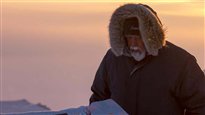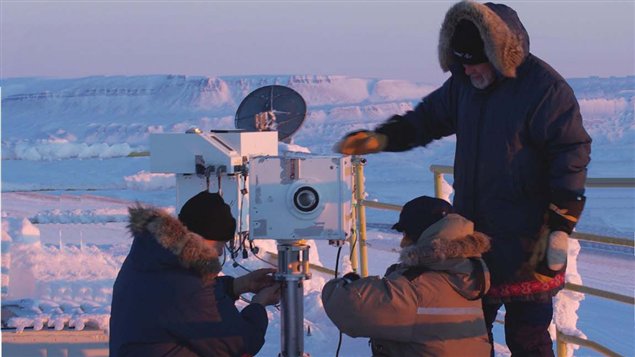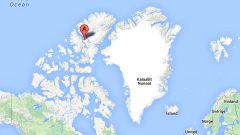Canadian scientists have just returned from a research station in Canada’s high Arctic following the collection of data on changes in the earth’s upper atmosphere.Listen
Tom McElroy (Ph.D., FCMOS, FRSC) has been performing upper atmostphere research for many years. He is a professor of Earth and Atmospheric Science and Engineering at the Lasonnde School of Engineering at York University in Toronto. Professor McElroy was part of an eight member team, who spent a month in the far north at Polar Environment Atmospheric Research Laboratory (PEARL) near Eureka on Ellesmere Island.

It’s in support of the Atmospheric Chemistry Experiment (ACE) which uses data from the Canadian SciSat-1 satelitte launched in August 2003.
The team collected dat from the weather station and deploy two highly precise instruments similar to those on SciSat-1.
The purpose is to use these ground instruments as a verification of the ones on the satellite.
One instrument is a Fourier Transform Spectrometer that measures sunlight in the infrared and the other is MAESTRO (Measurement of Aerosol Extinction in the Stratosphere and Troposphere Retrieved by Occultation).
Professor McElroy says of the trips and the research project, “The long-term data set being assembled by the ACE team − both the space data and the ground-based observations − are essential for assessing the significance of changes in the high-latitude atmosphere.”

The 16km road connecting the Ridge Lab to the PEARL weather station which is powered by a 16km long extension cord from the Lab and running alongside the road. Photo shows the barren nature of the landscape. While the precipitation at Eureka is so low it is classed as a desert, the snow that does fall stays around for the whole winter because of the low temperatures. Keeping the road open is an on-going activity. (courtesy T McElroy- CLICK TO ENLARGE
It should be noted that Professor McElroy is considered a world expert in atmospheric science.
Indeed, he had earlier invented the Brewer Ozone Spectrophotometer to measure ozone and later ultraviolet light, and which eventually would result in the ability for weather forecasters today to predict daily UV levels.








For reasons beyond our control, and for an undetermined period of time, our comment section is now closed. However, our social networks remain open to your contributions.